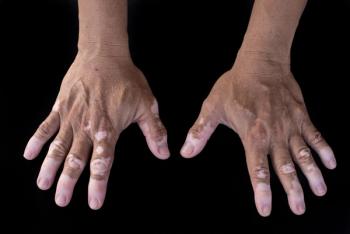
Select Skin Diseases are Higher in Patients with Inflammatory Bowel Disease
The occurrence of immune-mediated inflammatory diseases (IMID) is higher in patients with inflammatory bowel disease (IBD) than in the general population.
The occurrence of immune-mediated inflammatory diseases (IMID) is higher in patients with inflammatory bowel disease (IBD) than in the genereal population.
IMIDs often have a chronic, progressively worsening journey, requiring specific therapies and interventions. IMIDs also cause psychological distress and significant morbidity and have a negative impact on patients’ quality of life.
This data was recently published in a review in Therapeutic Advances in Gastroenterology (TAG). The review looked at the less frequent, less understood associations between IBD and IMIDs, as suggested by authors.
IBD patients have an increased risk of developing some IMIDs such as vitiligo, psoriasis, atopic dermatitis, Hidradenitis suppurativa (HS), Acute intermittent porphyria (AIP), Multiple Sclerosis (MS). For IBD patients with psoriasis or atopic dermatitis, the clinical course of IBD is worse, the review said. For other IMIDs, information on the risk in IBD patients is lacking because of the rarity of such diseases, the lack of adequately powered studies, and possibly the absence of a real association with IBD.
An early diagnosis is pivotal for reducing the progressive course of both IBD and the associated IMID. Therefore, medical specialists, including gastroenterologists, should be able to recognize the signs and symptoms of IMIDs that require specialist evaluations, authors suggest.
However, the described IMIDs above are rare diseases and, although more prevalent in the IBD population, a formal screening program for each patient at the time of IBD diagnosis would most likely not be cost-effective. In addition, clinicians should keep in mind that, due to different genetical and environmental backgrounds, different IMIDs have different geographic distribution.
On the other hand, all clinicians dealing with IBD should be familiar with the onset of IMIDs as side effects of some therapies. This knowledge will help reduce the number of unnecessary specialist evaluations.
Recently, an agreement between gastroenterologists and rheumatologists identified several signs and symptoms for the prompt, correct mutual referral for specialist examinations, to facilitate an early diagnosis of coexisting IBD. Though, further collaborations between different disciplines are needed and should be encouraged.
Patients who have several associated IMIDs need multispecialist care, the review stated. Their clinicians should define a single therapeutic strategy considering the overall characteristics and needs of each patient; each IMID should not be treated separately. This multidisciplinary approach can help avoid diagnostic delays, choose the correct therapies (type and duration), prevent complications, and improve both clinical outcomes and quality of life.
However, the insufficient knowledge of the epidemiology of the IMIDs reviewed here limits the author's ability to recognize the patterns of co-occurrence of these diseases, to assess a patient’s overall disease burden, and to provide an effective treatment.
In conclusion, large, high-quality studies are needed to better clarify the associations between IBD and these rare IMIDs, mainly for those where robust evidence is still lacking.
Newsletter
Get the latest industry news, event updates, and more from Managed healthcare Executive.




















































